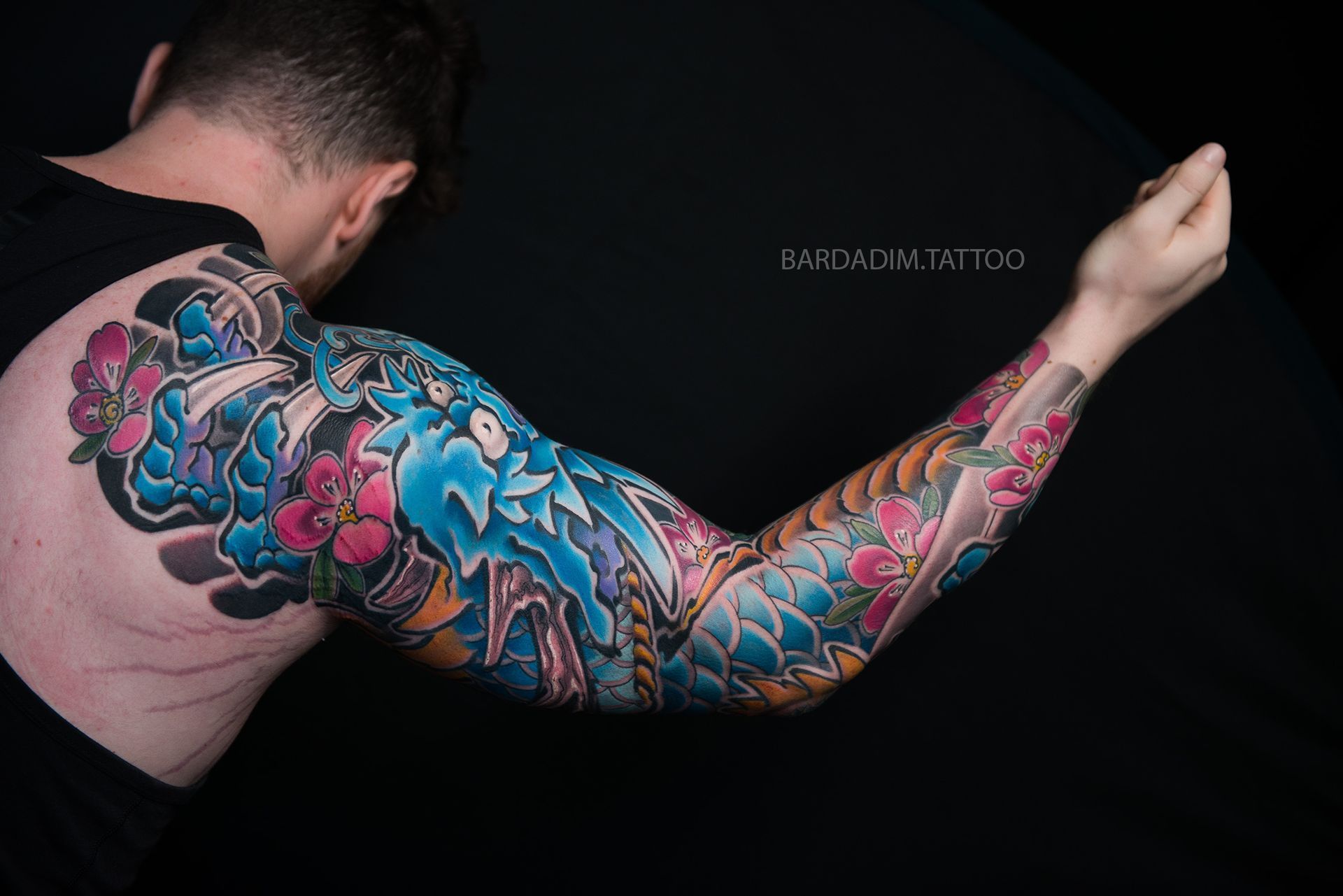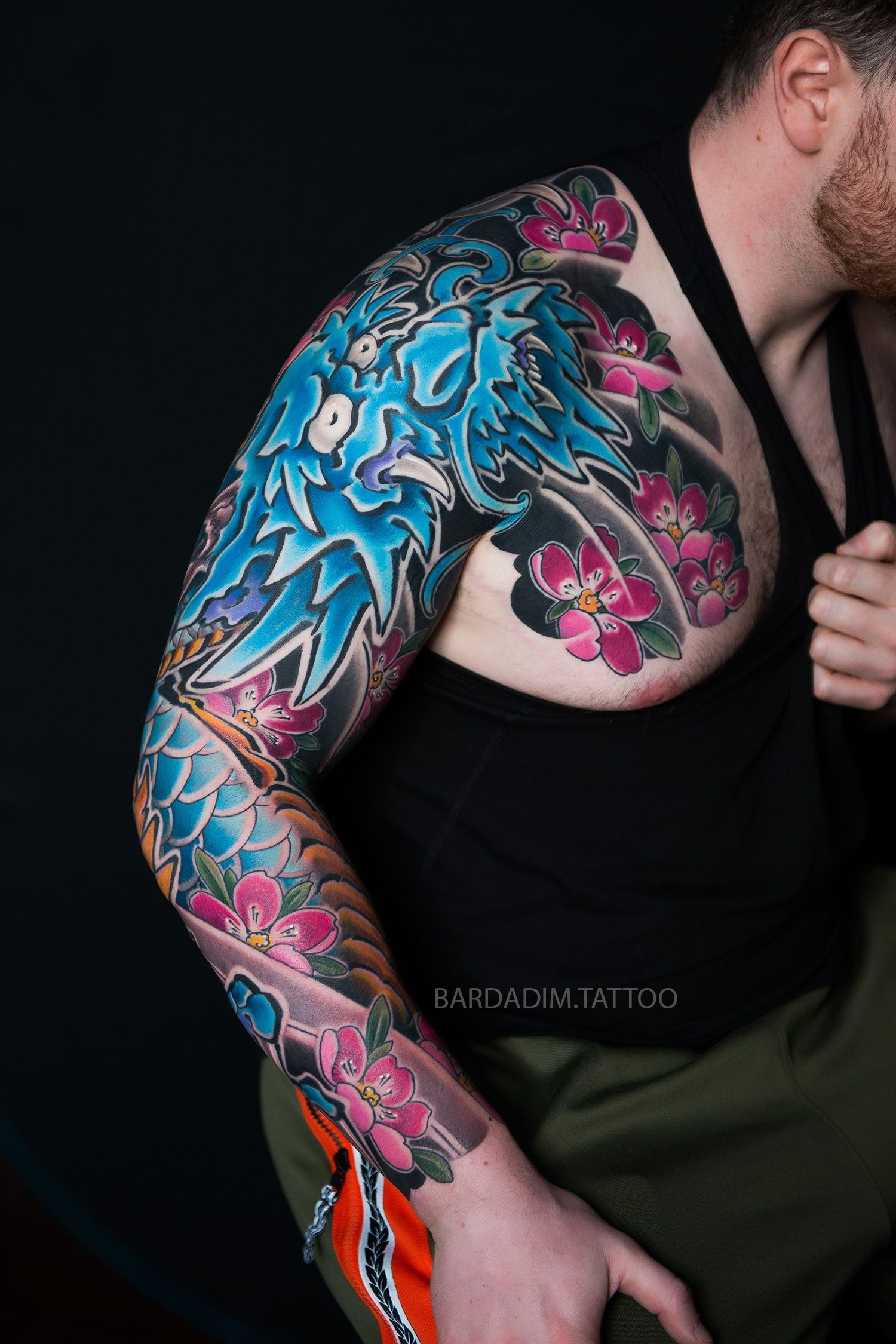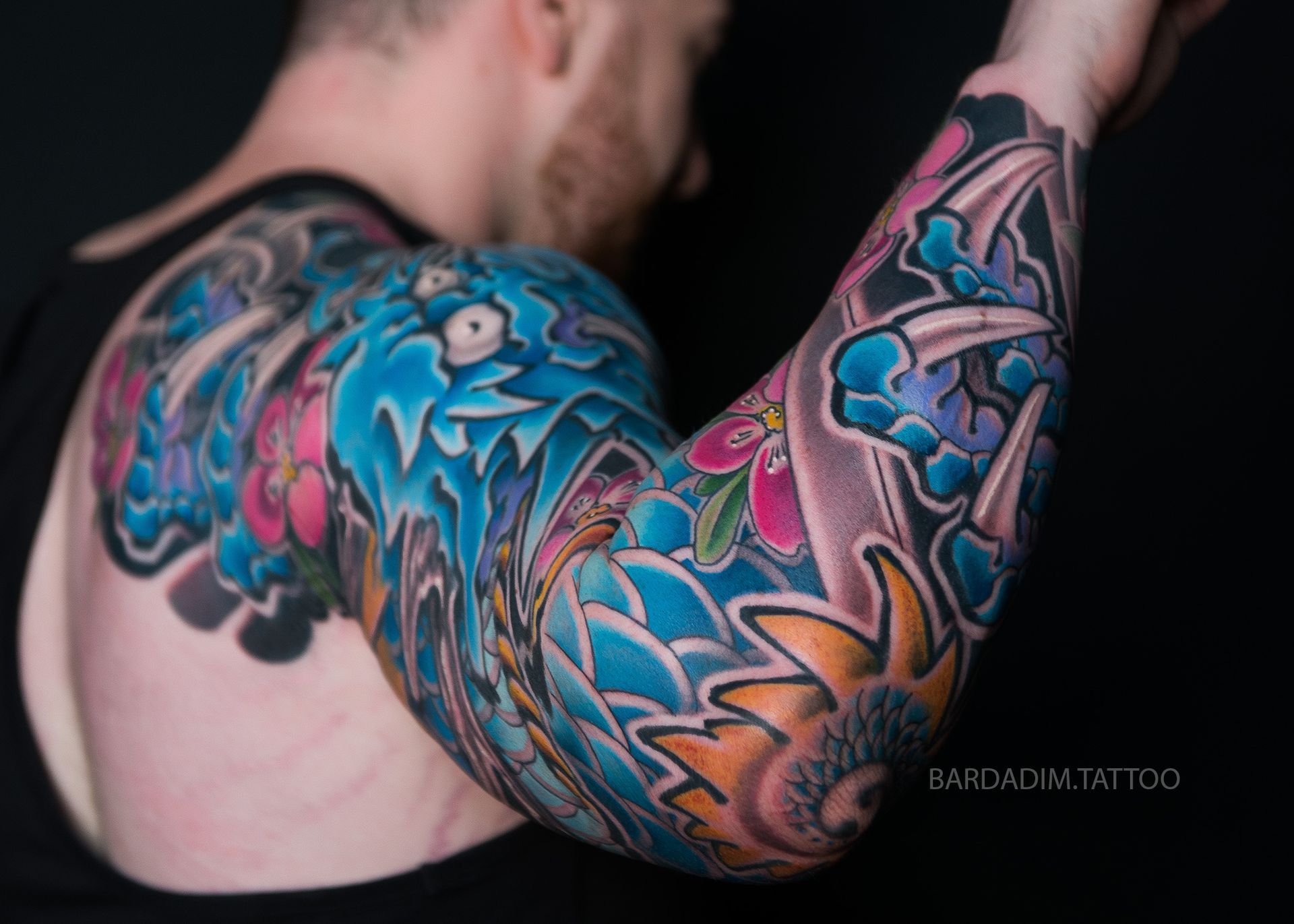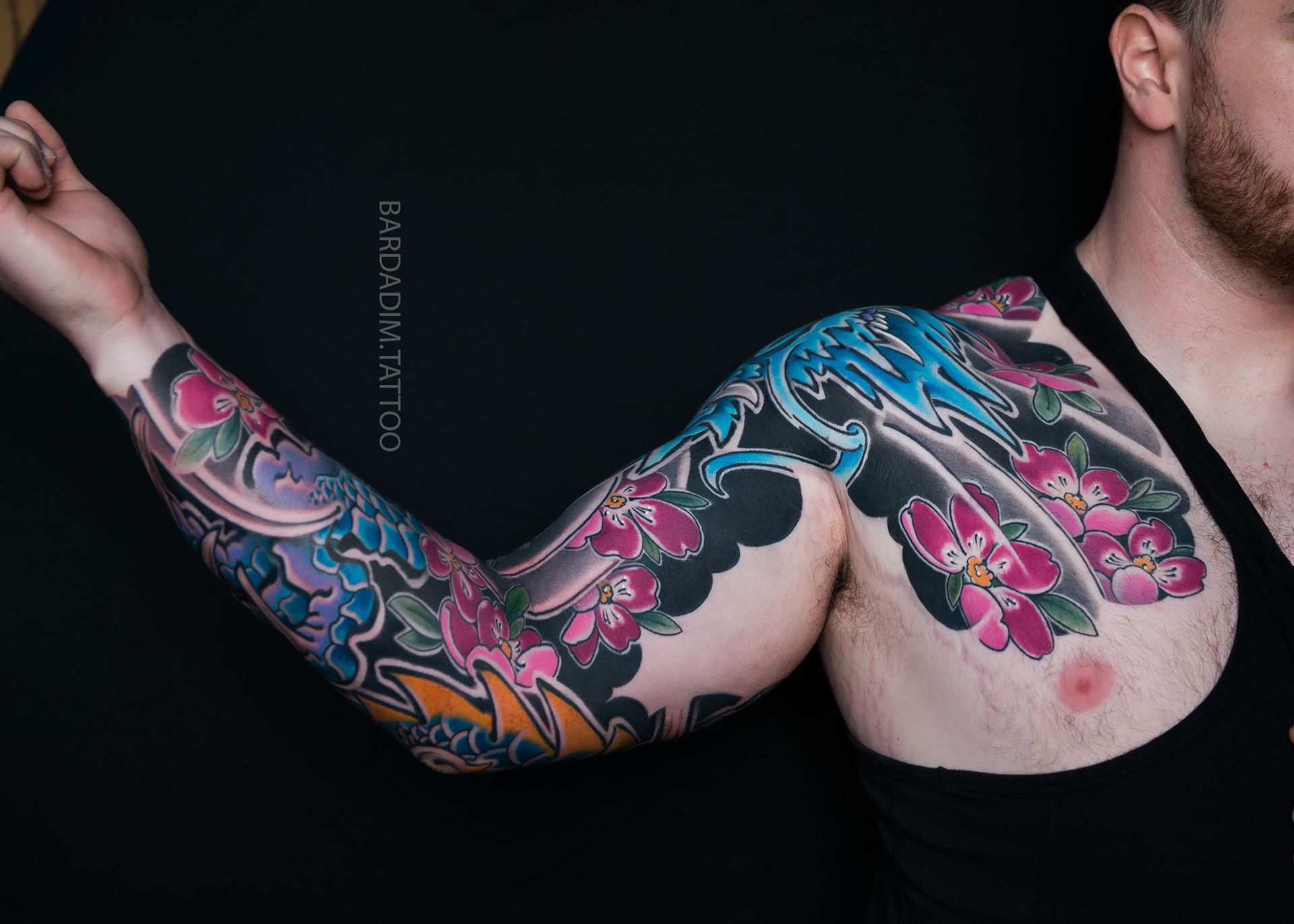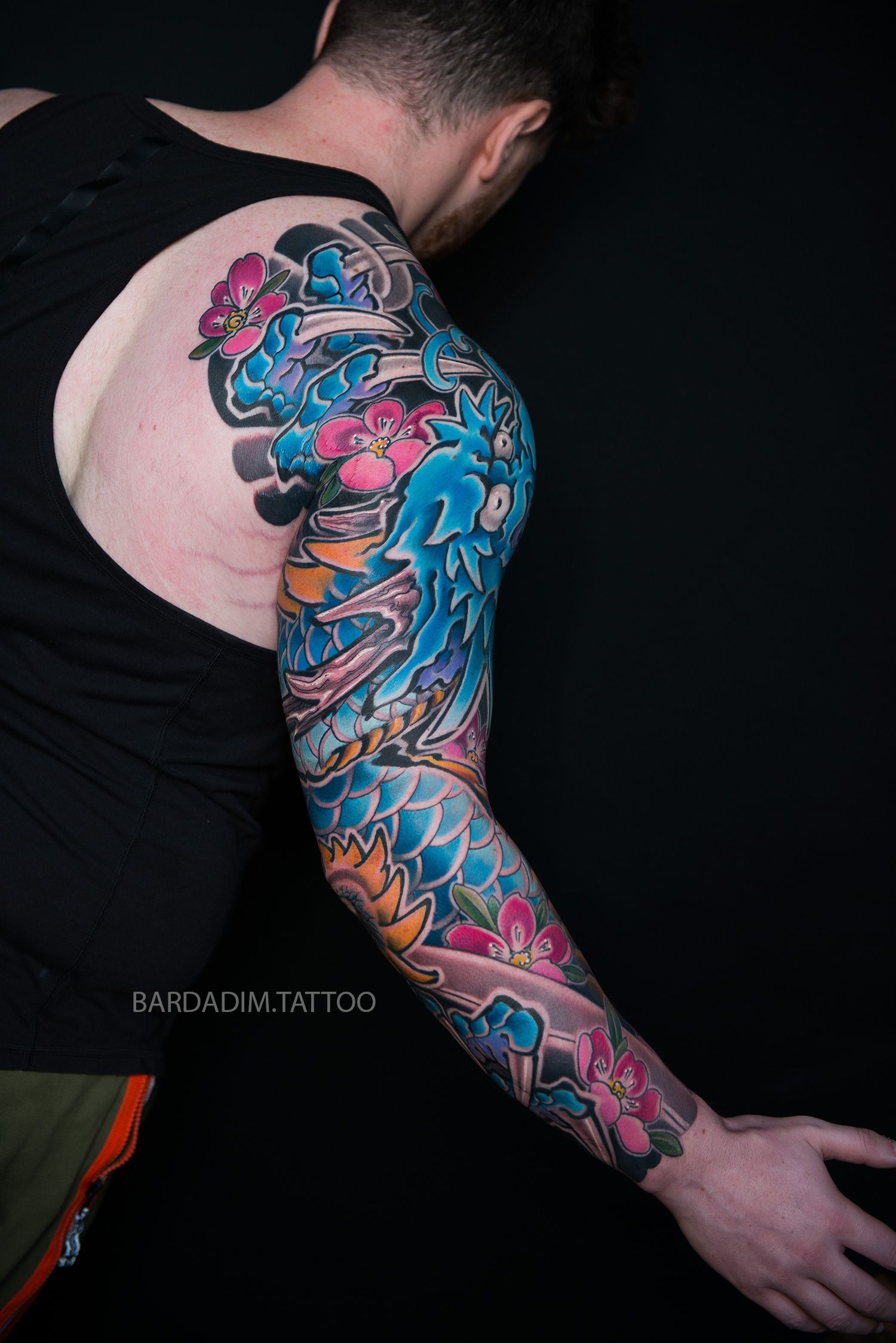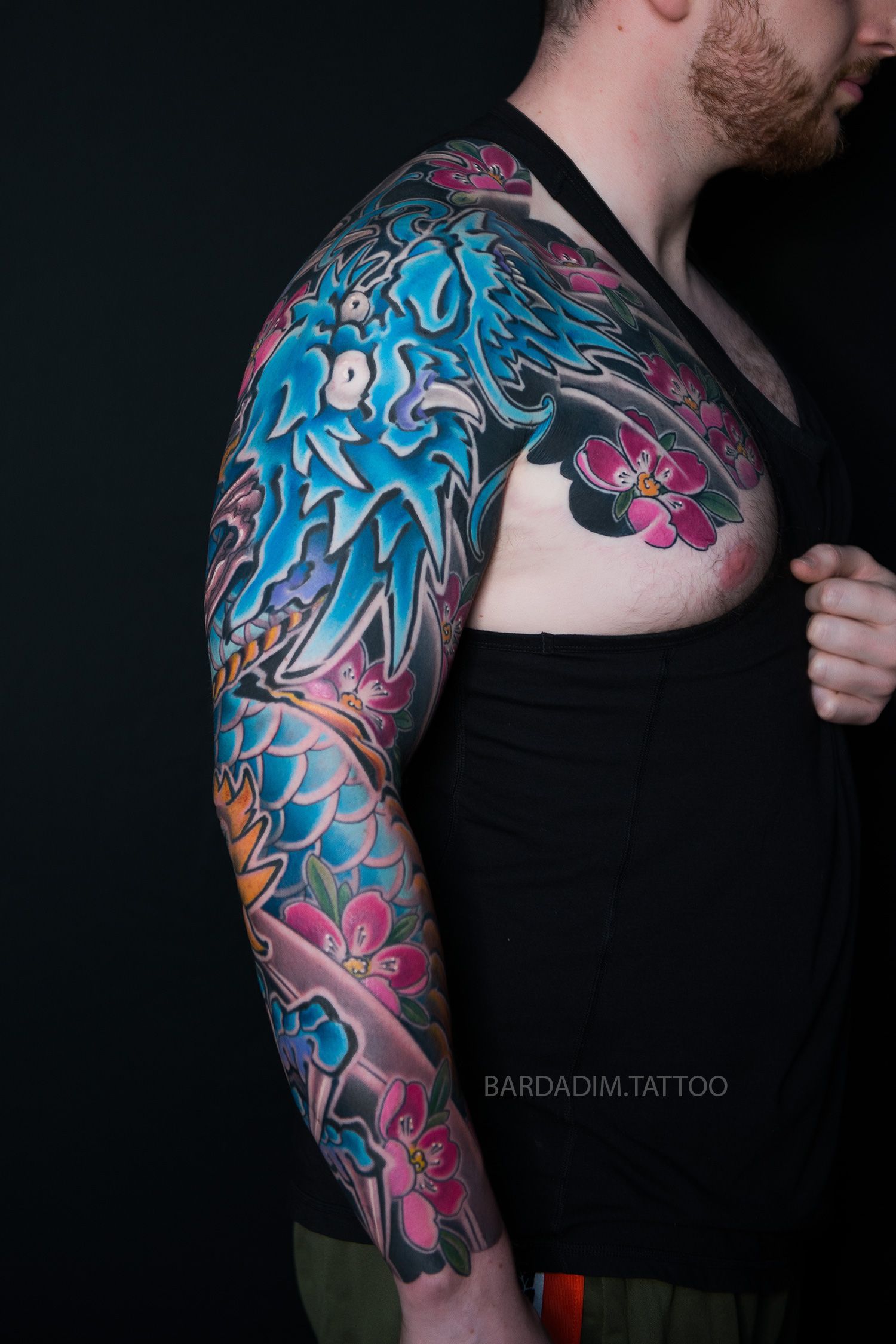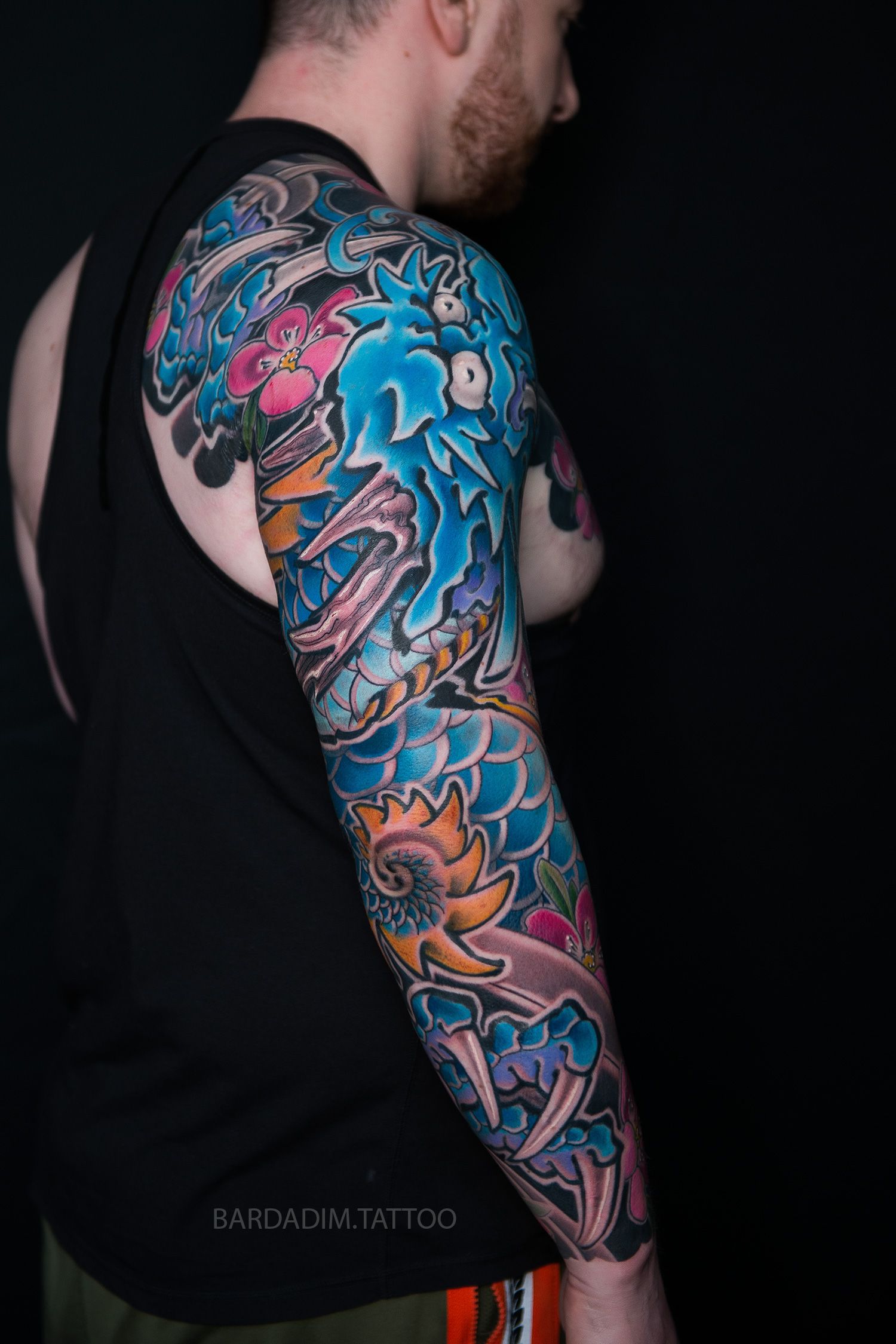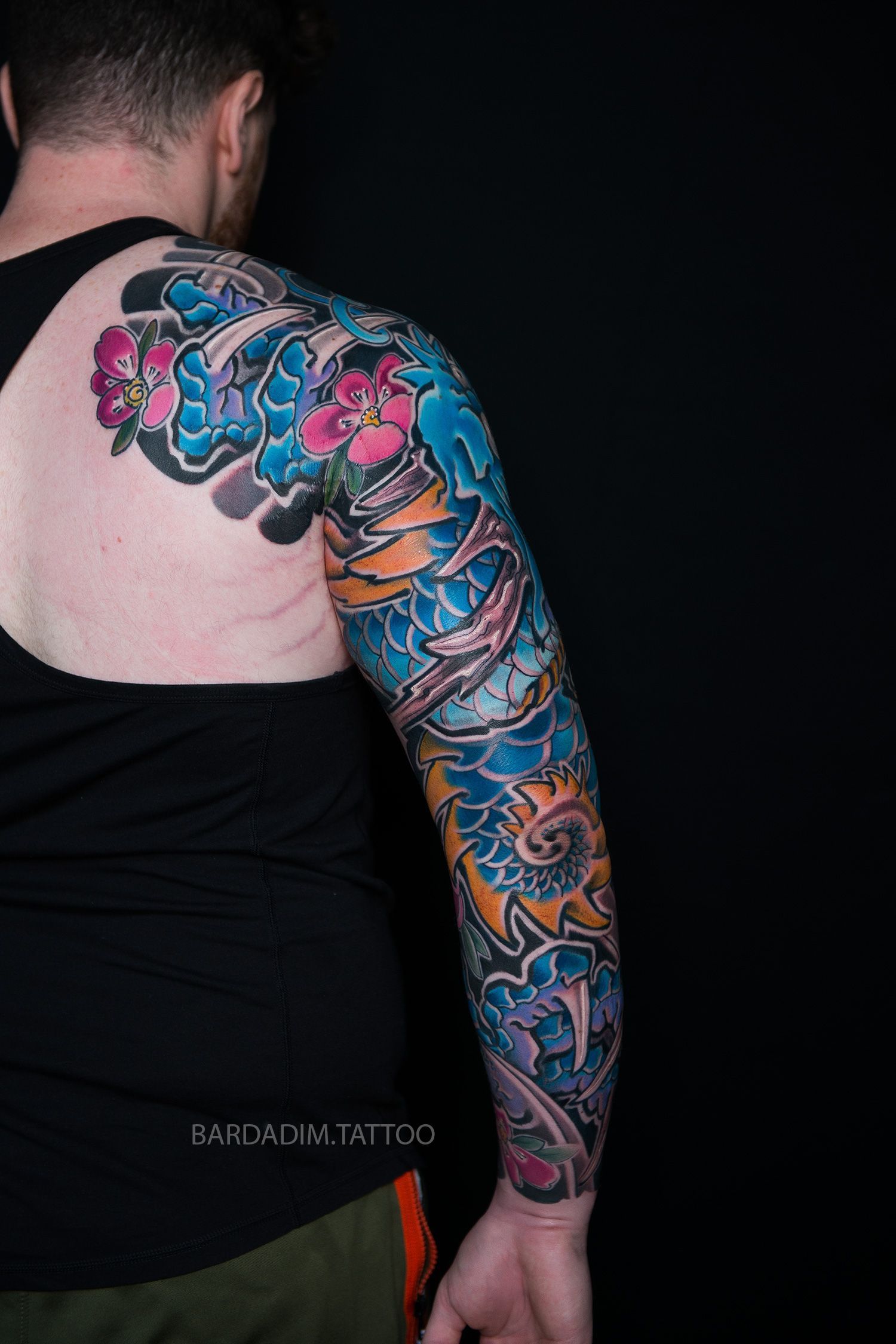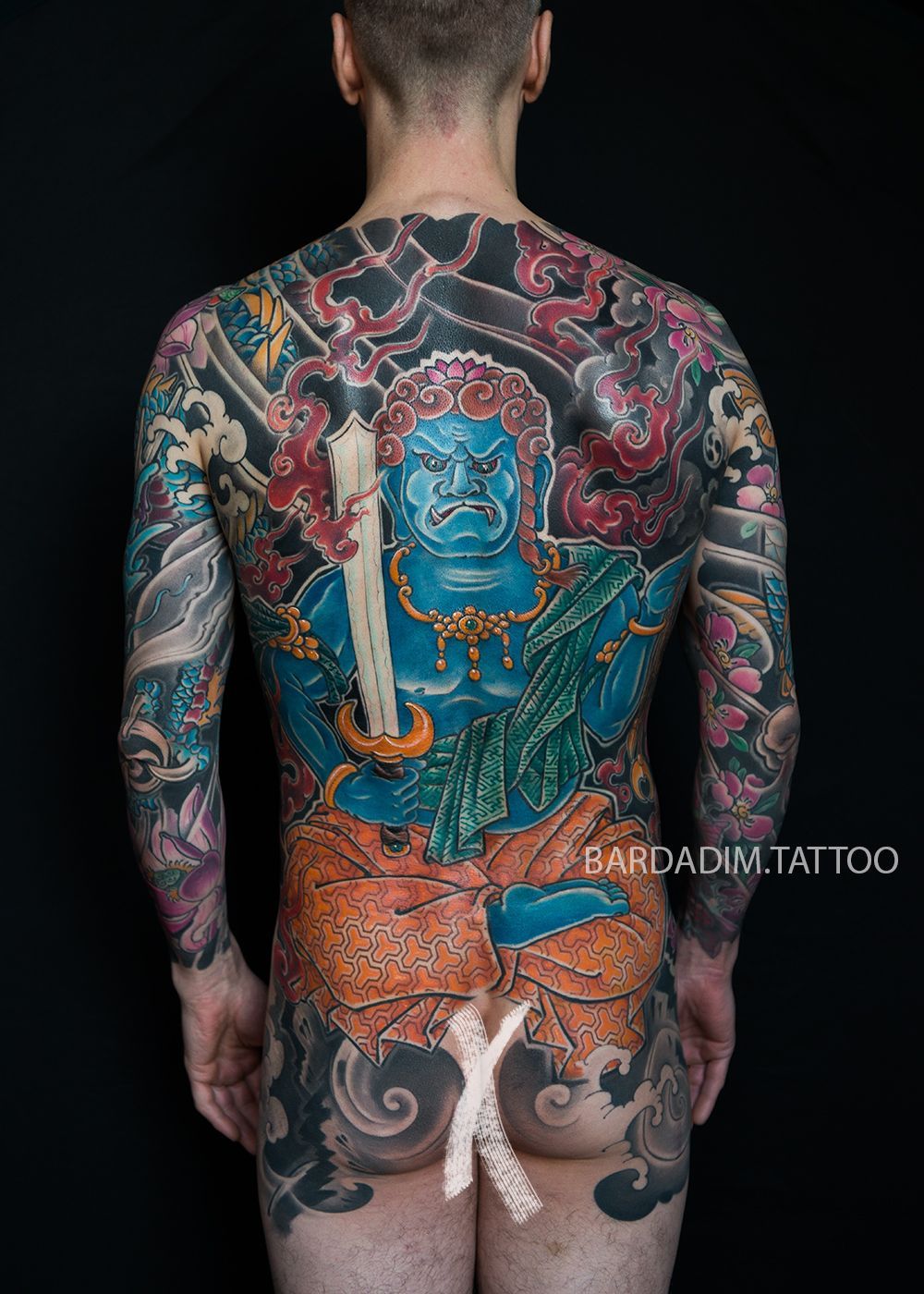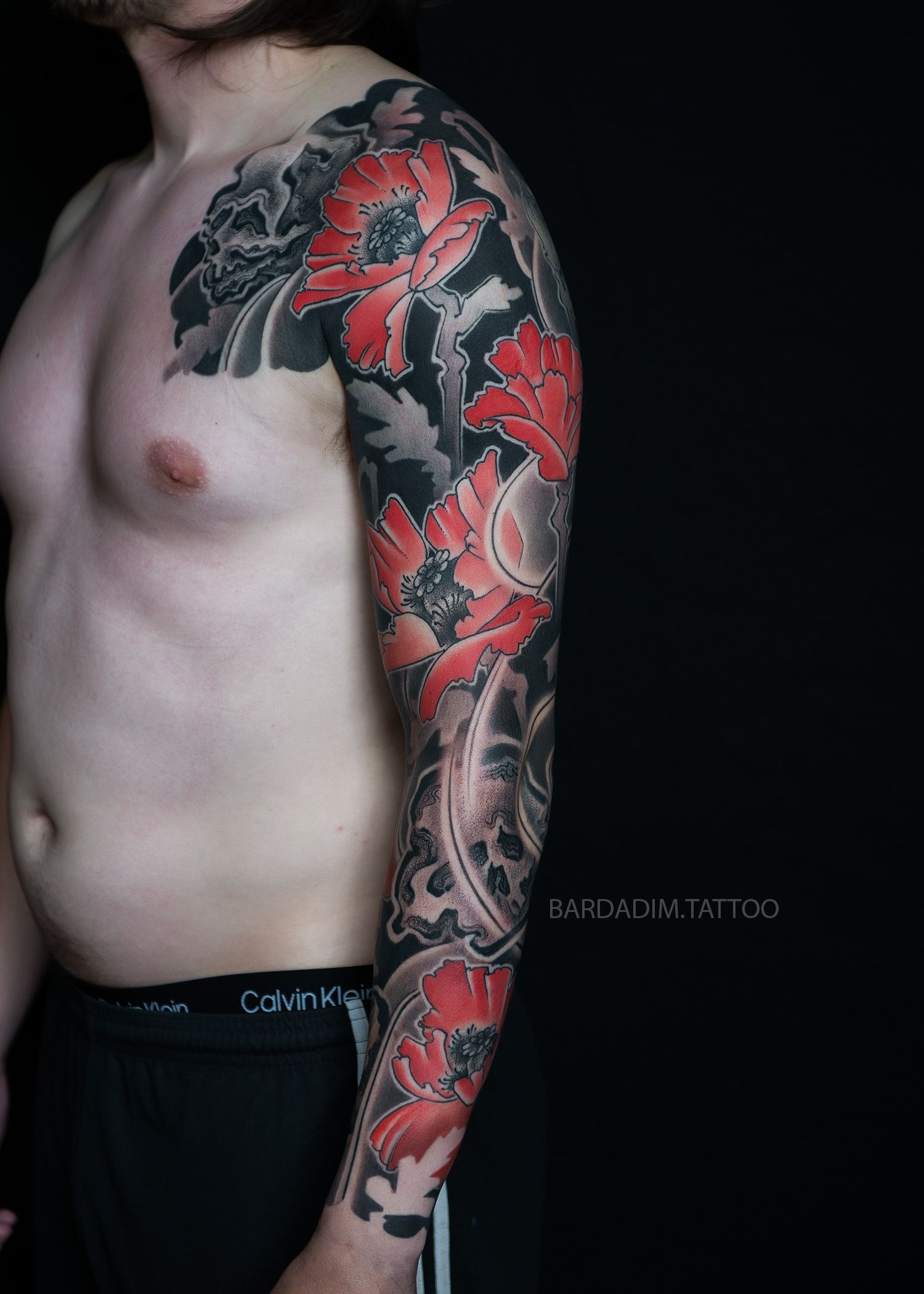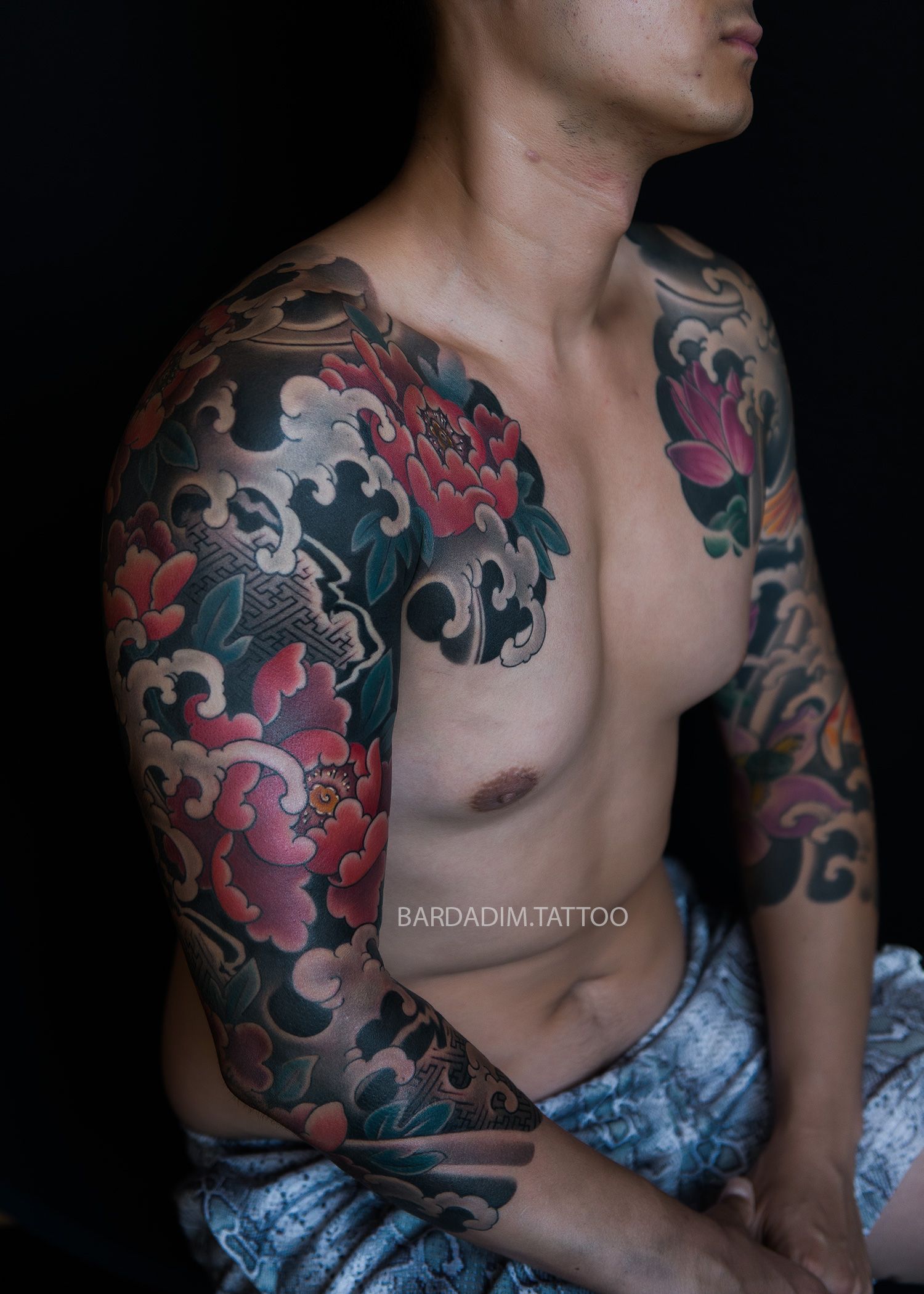Full sleeve tattoo, is a popular and intricate form of body art that covers the entire arm.
These tattoos often feature elaborate designs, and one of the fascinating choices is a blue dragon alongside cherry blossoms.
In Japanese culture, the blue dragon symbolizes strength, wisdom, and good fortune. It is considered a powerful and mythical creature that represents protection and success. The dragon is believed to bring luck and ward off evil spirits.
Cherry blossoms, on the other hand, hold a significant meaning in Japanese culture. They symbolize the transient nature of life and remind people to appreciate the beauty of the present moment. Cherry blossoms are also associated with renewal, hope, and the arrival of spring.
Combination
Combining the blue dragon and cherry blossoms in an Itezumi full sleeve tattoo creates a captivating and meaningful design. It represents a harmonious balance between strength and beauty, power and fragility. It serves as a reminder to embrace life's challenges with resilience while cherishing the fleeting moments of beauty and joy.
Overall, the blue dragon and cherry blossoms in an Itezumi full sleeve tattoo hold deep cultural significance in Japanese culture, conveying messages of strength, wisdom, good fortune, appreciation, and renewal.
Other Tattoo Projects
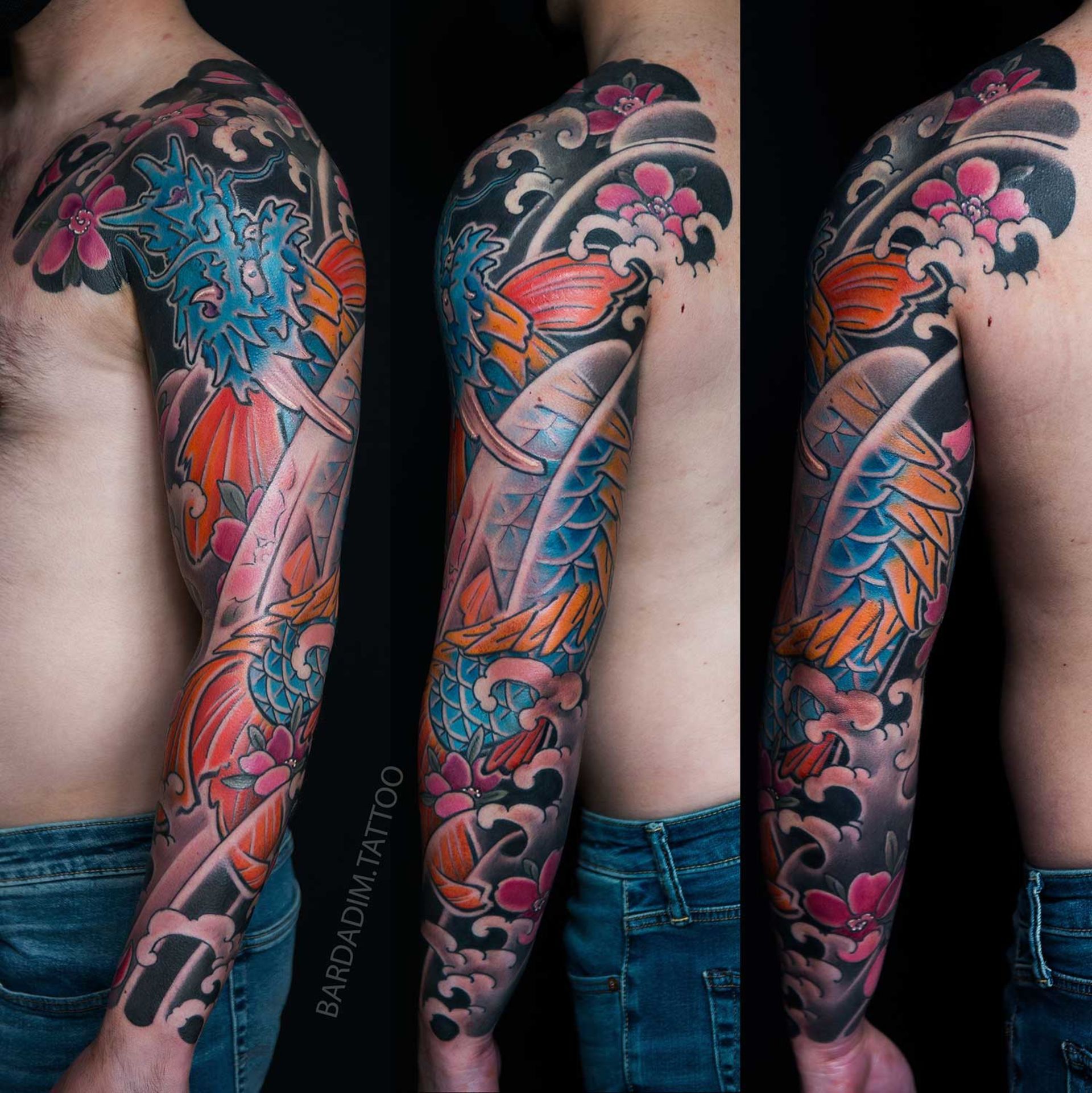
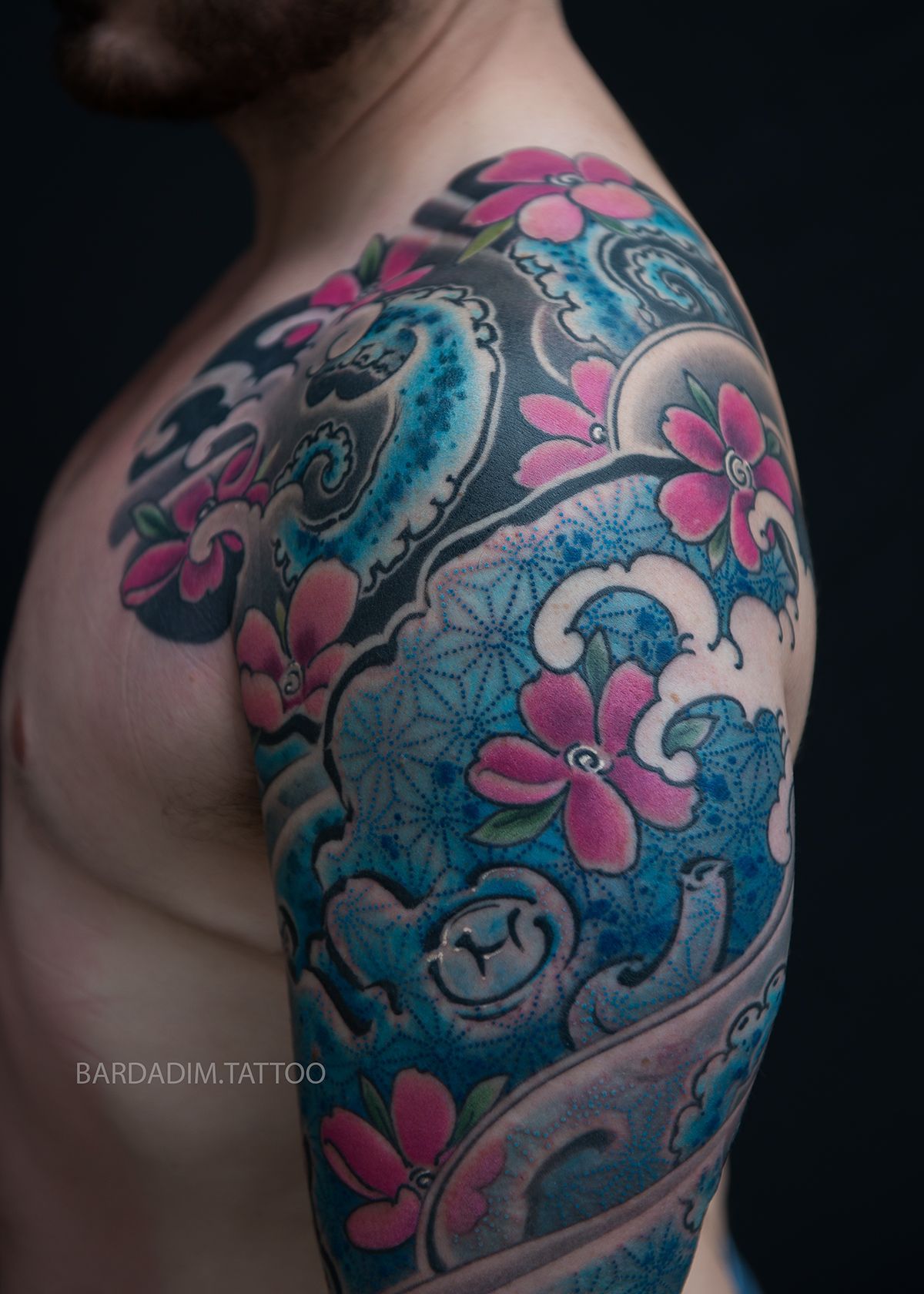
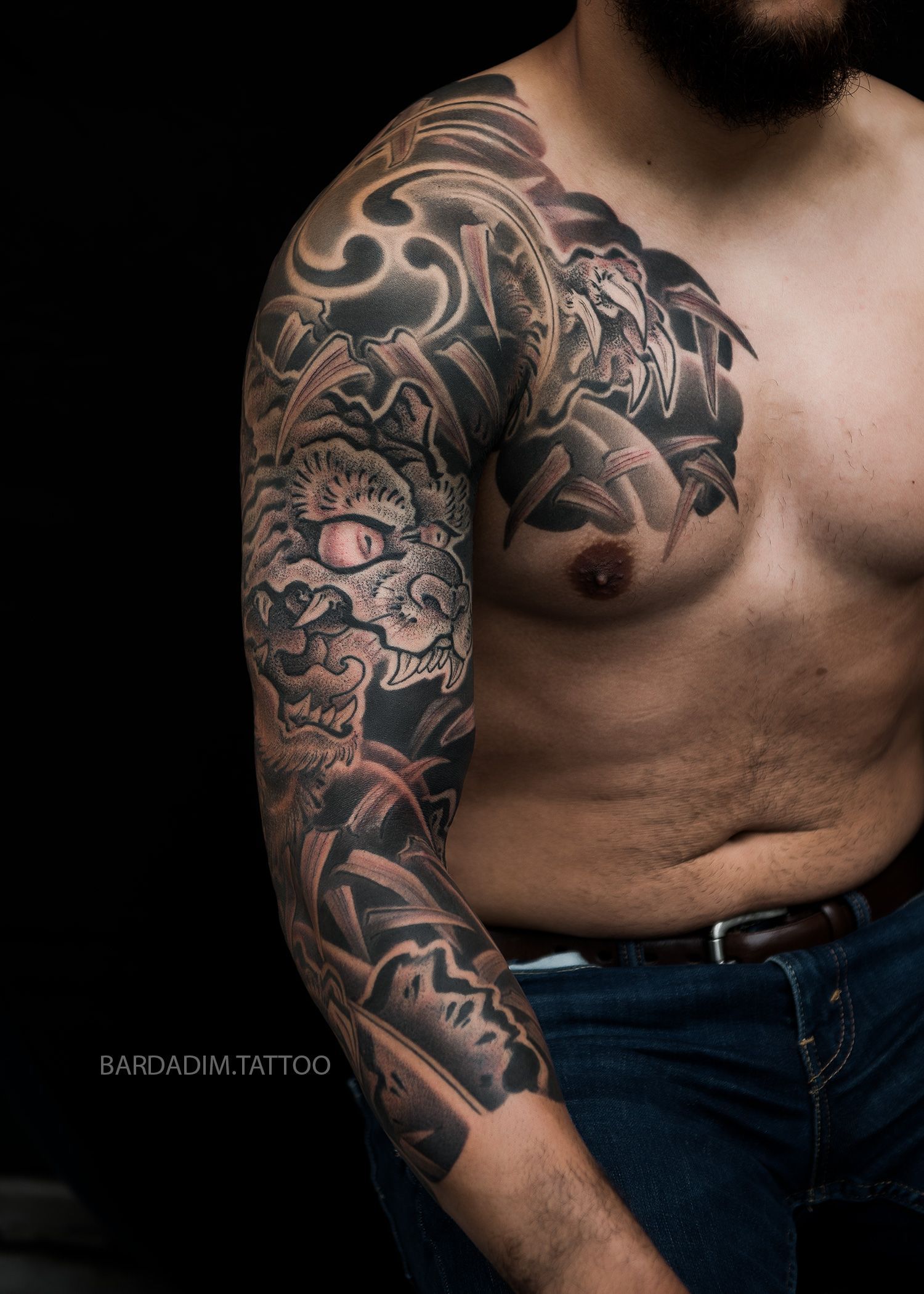
All Tattoo Projects

Other Posts


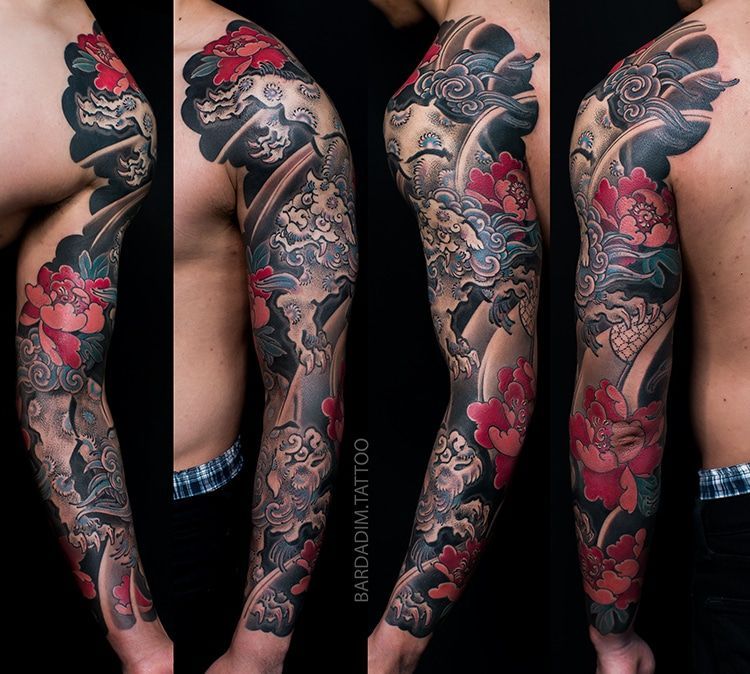
Ready to start your tattoo project?
We do NOT do walk-ins. ONLY private appointments which really easy to schedule. Please learn the process and request your consultation.


